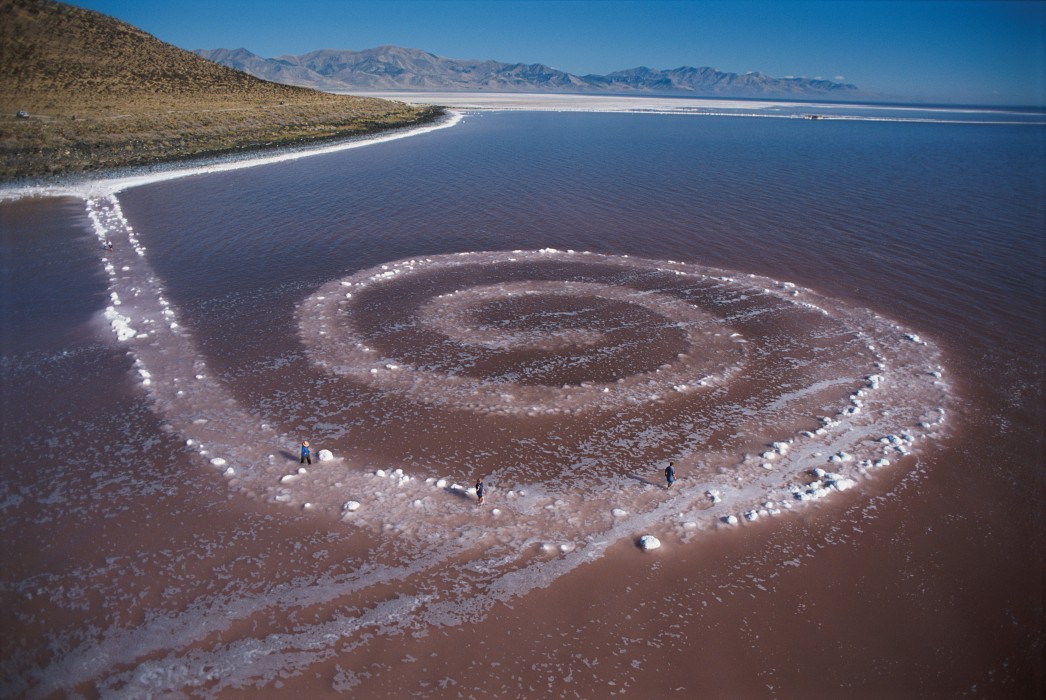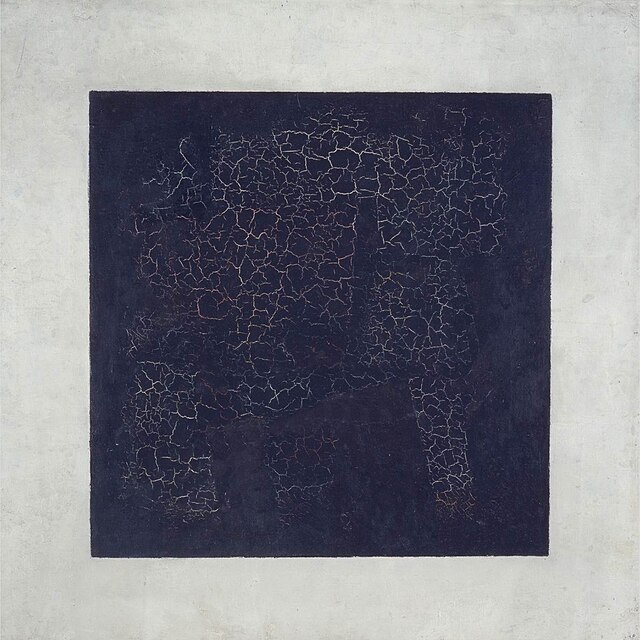Temporal Landscapes: Esteban Amaro and the Intersection of Past, Future, and Artistic Tradition
by Carlo Borloni
Esteban Amaro's latest collection, "In The Past Hides The Future," situates itself within a broader lineage of artists who have sought to explore the intersections of time, space, and human origins.
Drawing on multiple mediums such as photography, sculpture, video, installation, and artificial intelligence (AI), Amaro's work evokes a sense of timelessness and cosmic wonder.
By examining his collection in the context of artistic predecessors, we can see how Amaro both builds upon and reinterprets key themes that have fascinated artists across centuries, creating a unique dialogue with the past while pushing the boundaries of contemporary art.

Lightness Of The Being, Esteban Amaro
Amaro and the Monumental: Echoes of Land Art
One of the most striking aspects of Amaro's work is his engagement with monumental structures that evoke a sense of timelessness and scale, blurring the lines between human and extraterrestrial origins.
This approach immediately recalls the work of Land Art pioneers like Robert Smithson and Richard Long, who used natural materials and vast landscapes to create site-specific works that challenged traditional artistic boundaries.

Spiral Jetty, Robert Smithson
Smithson's Spiral Jetty (1970), a massive earthwork constructed in the Great Salt Lake in Utah, is a prime example of how the land itself can serve as both medium and message.
Smithson's use of natural materials to create a spiraling form is deeply connected to ideas of time and entropy, concepts that resonate with Amaro's focus on the fluidity of time and the archaeology of the unknown.
Like Smithson, Amaro constructs forms, whether physical or digital, that feel as though they belong both to a distant past and a speculative future.
His monumental sculptures, rendered through AI, evoke the same sense of wonder and mystery, questioning human history's relationship to the cosmos and creation.
Similarly, Richard Long's walking sculptures, such as A Line Made by Walking (1967), explore humanity's relationship with the environment.

Signs, Esteban Amaro
Long's minimalist approach to mark-making within natural landscapes parallels Amaro's minimalist aesthetic, particularly in the way both artists create works that appear to transcend time, offering a connection between ancient, organic forms and modern interpretations of space.
Cosmic Connections: Amaro and the Spiritual Art of the Abstract
In his focus on the “impossible becoming possible” and the blending of natural and supernatural elements, Amaro also aligns himself with artists whose work is concerned with spirituality and the exploration of the cosmos.

Abyss Of Time, Esteban Amaro
A key figure here is Kazimir Malevich, particularly his Suprematist works, such as Black Square (1915). Malevich's abstract forms, which sought to transcend the physical world and represent pure feeling, resonate with Amaro's attempts to merge the ancestral and cosmic.
Just as Malevich's work was about accessing higher planes of thought and being, Amaro's AI-generated images suggest access to hidden realms of knowledge, what he describes as a “cosmic hidden web of knowledge.”

Black Square, Kazimir Malevic
This spiritual connection is also present in the work of Agnes Martin, whose minimalist grids and fields of color invite contemplation and introspection.
Amaro's own meditative process, grounded in contemplation and experimentation, mirrors Martin's approach to creating art as a way to access deeper truths about the human experience and our connection to the infinite.
Both artists create works that feel timeless and universal, evoking a sense of the sublime through simplicity and restraint.
The Technological Frontier: Amaro and the Avant-Garde's Embrace of New Media
Amaro's use of artificial intelligence as a tool for creation situates him within a broader avant-garde tradition of artists who have embraced new technologies to push the boundaries of what art can be.
Nam June Paik, often considered the father of video art, used emerging technology in the 1960s and 1970s to create works that challenged the nature of the medium and the way audiences engaged with art.
Paik's groundbreaking use of television sets, video cameras, and satellite technology laid the groundwork for later artists like Amaro, who are now exploring the possibilities of AI and digital media.

Buddha TV, Nam June Paik
In the 21st century, artists like Rafael Lozano-Hemmer and Refik Anadol have continued this tradition by integrating digital technology and AI into their work to create immersive installations and data-driven art.
Lozano-Hemmer's interactive installations, such as Pulse Room (2006), which uses sensors to capture biometric data and create visual and auditory representations of the human body, and Anadol's Machine Hallucinations (2019), a series of AI-generated images, both echo Amaro's exploration of the unknown through artificial means.
These artists, like Amaro, use technology to engage with questions of perception, reality, and the unseen forces that shape our world.
Amaro's AI-generated images in "In The Past Hides The Future" go a step further by invoking the archaeology of the unknown and suggesting that AI can access realms beyond human understanding.
This vision of technology as a conduit for accessing hidden truths parallels the way artists like Paik and Lozano-Hemmer viewed technology as a bridge between the known and the unknown, the visible and the invisible.
Timelessness and Temporal Fluidity: Amaro and the Surrealist Legacy
The blending of temporal dimensions in Amaro's work, where the past, present, and future coexist, also calls to mind the Surrealist movement, particularly the works of Salvador Dalí and Giorgio de Chirico.
Dalí's The Persistence of Memory (1931), with its melting clocks and dreamlike landscape, similarly distorts time and reality, creating a fluid space where time becomes malleable.
Amaro's collection also evokes this sense of timelessness, asking viewers to reconsider the linearity of time and to explore the possibilities that arise when the boundaries between temporal dimensions blur.

The persistence of memory, Salvador Dali
Giorgio de Chirico's metaphysical paintings, with their enigmatic, deserted cityscapes and classical statues, offer another point of comparison. His works, such as The Enigma of an Autumn Afternoon (1910), evoke a haunting stillness, where time seems suspended, much like the timeless quality of Amaro's monumental structures.
Both artists use their work to explore the unknown, presenting viewers with scenes that feel simultaneously familiar and otherworldly, as if existing in a dimension just beyond our reach.

Appear And Disappear; Esteban Amaro
Conclusion: A New Artistic Paradigm
Esteban Amaro's "In The Past Hides The Future" positions him as a contemporary artist deeply engaged with the ideas of time, space, and cosmic connection that have fascinated artists for centuries.

Artic Portal, Esteban Amaro
By drawing upon the monumentalism of Land Art, the spiritual abstraction of Malevich and Martin, the technological innovations of Nam June Paik, and the surrealist explorations of time by Dalí and de Chirico, Amaro creates a body of work that is at once rooted in art history and radically forward-looking.
His use of AI adds a layer of innovation to these age-old questions, suggesting that technology might hold the key to rediscovering the lost knowledge of our ancestors and reimagining our future.
In this way, Amaro's work not only engages with the legacies of the past but also challenges contemporary viewers to rethink their place in the universe, as they navigate the delicate balance between the natural and the supernatural, the known and the unknown, the past and the future.
Sign up for our newsletter to keep up with the latest news from NINFA
Sign up for our newsletter to keep up with the latest news from NINFA
Write us at: info@ninfa.io, or click here if you need support
Copyright © 2025 Ninfa Labs - 12094240962 - All rights reserved

